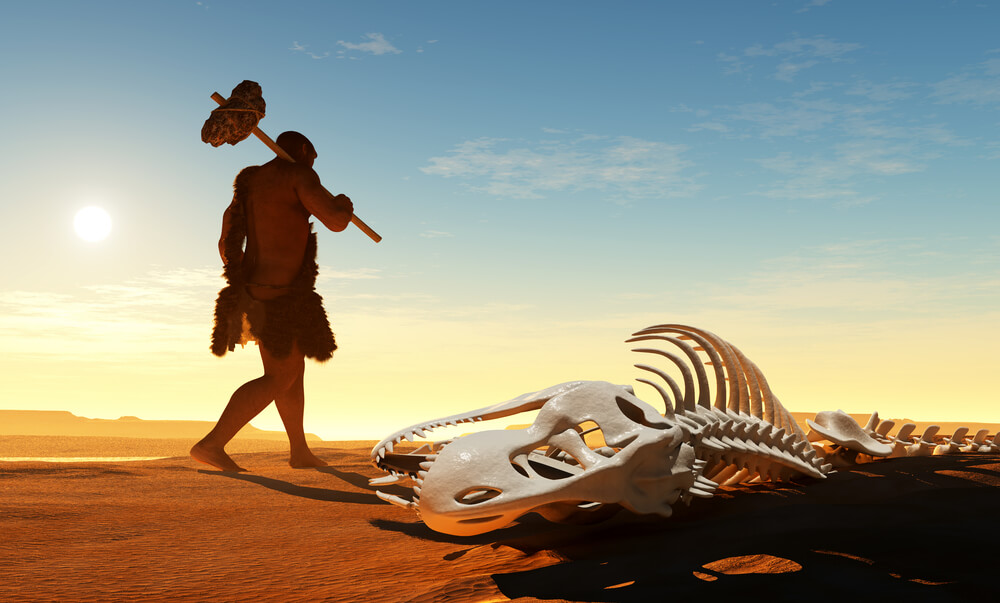
Thinking about a diet change? Wondering about the Paleo Diet Plan? We’ve got all the info you need to make an informed decision.
One of the hottest topics and diet plans going today is the Paleo diet. It is a concept that has been around since the 1970s and much of its work can be attributed to Dr. Loren Cordain. The diet has created some controversy and many people ask themselves does the paleo diet work? It is followed by millions and hated by others. Still, it has produced quite remarkable results worldwide.
Also known as the caveman diet, the Paleo diet is a modern version based on what cavemen would have eaten during the Paleolithic era. This ended after the development of agriculture 10,000 years ago and grain-based diets became the new way of eating. The diet is now based on commonly available foods and includes cultivated plants and domestic animal meat instead of the wild sources of the original diet.
There are a huge number of benefits and reasons for using the Paleo diet. Many people who follow this way of eating believe that human genetics haven’t changed much since the beginning of agriculture and have not been able to adapt and change to suit these new foods such as dairy and grains. Many believe that they have seen improved health as a result of excluding foods such as dairy and grains. These foods can affect those with lactose intolerance and glucose sensitivity. This suggests that our bodies haven’t yet adapted to these new foods.
Our bodies function well on fats and proteins with small amounts of carbs. It suggests that humans don’t actually need dietary carbs, and enough energy can be obtained proteins and carbs. Experts claim that our bodies prefer ketones for energy – byproducts from fat – metabolism. Athletes rave about the Paleo diet as there is minimal loss of lean muscle mass while dieting, increased strength and power, lower levels of body fat and an improved sense of well-being.
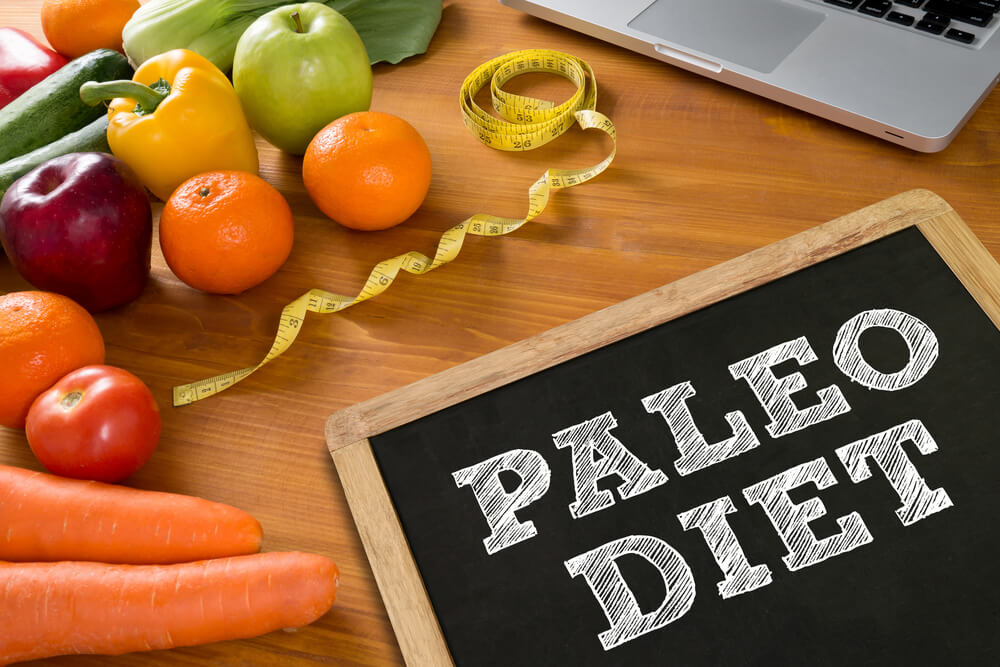
This Is The Ideal Macro Split
It’s believed that 55 to 65% of daily calories should come from animal foods and 35 to 45% from plant foods. If you apply this to a daily intake of 2,500 kals, you would expect that 1,400 to 1,625 kals would come from animal foods (made up of proteins and fats). Of course, 900 to 1,125kals would come from plant foods (nuts, seeds, and veggies).
In the modern day Western diet, more than 70% of all stuff eaten comes from refined and manufactured foods such as dairy products, cereals, and alcohol. Therefore, it’s not surprising that there has been a massive increase in obesity, high blood pressure, and diabetes.
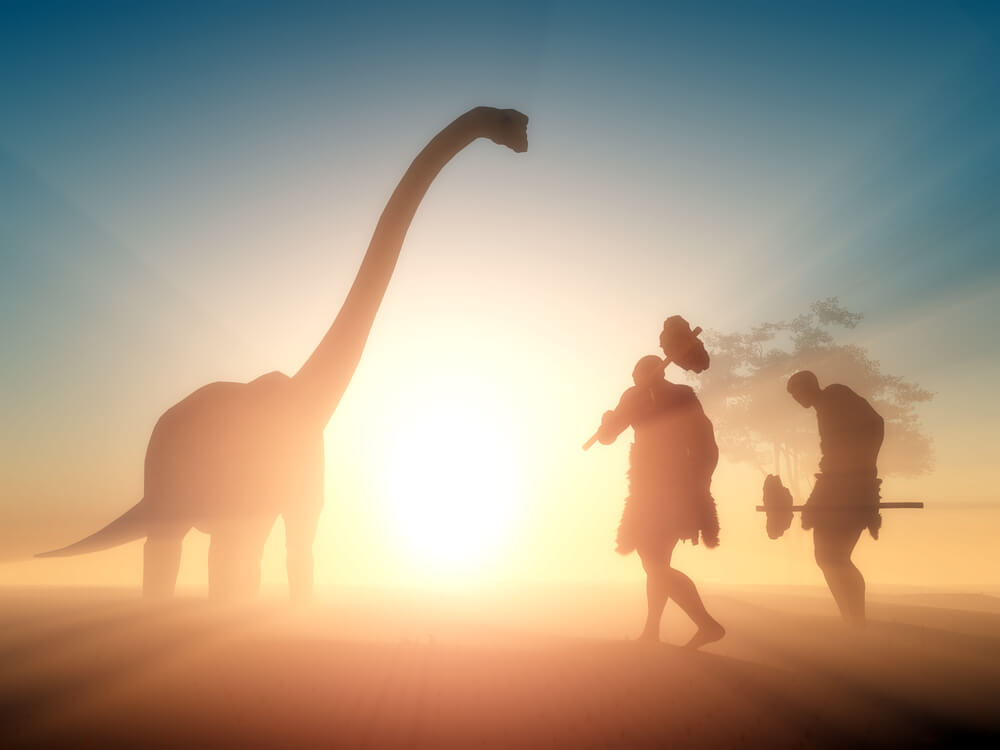
How Does Physical Work Impact Us?
Cavemen were carnivorous predators. If they wanted to survive, they had to hunt for their food. So our genetics are such that we should be involved in some kind of daily physical activity. That’s not like the common daily lifestyle of physical non-activity which, in turn, can lead to weight gain and new-age diseases. Today, humans also carry higher levels of body fat and less lean muscle mass. This puts them at a high risk of insulin resistance.
These Are The Foods To Eat On The Paleo Diet Plan
Wondering what types of foods you should eat on the Paleo diet?
Thinking there may not be enough to suit you?
Think again. Before we jump into the foods, let’s discuss your beverages. Drink water and stay hydrated. There’s to be no juice or alcohol.
If you like seafood, you could have salmon, tuna, mackerel, prawn and many other fine dishes. If meat is your favorite, you can have red meat, chicken, pork or so many others. You can also research the best protein foods.
There are also lots of veggies to consider. Among them includes spinach, broccoli, cabbage and kale. Of course, you could also have nuts and seeds including, Almonds, Brazil, walnuts, cashews, sunflower seeds, etc. Oils and fats are also present. Try olive oil, coconut oil, peanut and almond butter to name only a few. Then there are fruits such as apples, pears, oranges, grapefruit, etc.
These Are The Foods To Avoid On The Paleo Diet Plan
As you can see, there are lots of foods to eat on the Paleo diet. With that said, there are some things to stay away from. These include dairy, grains, fatty meats, sweets and starchy veggies.
Stay away from dairy like cheese, yogurt, ice cream, butter, etc. You also want to keep away from grains including cereals, bread, oats, beer, pasta, etc. Sweets are off limits. That includes chocolate. Sorry. There are also no starchy veggies like sweet potatoes, squash, yams, etc. You also need to keep away from processed and deli meats, as well as salty foods including ketchup.
It’s clear that there are many benefits to the Paleo way of eating. However, as with any controversial way of eating, there will still be opposition to the lifestyle. So I’d like to take a closer look at the science and the facts about the Paleo diet.
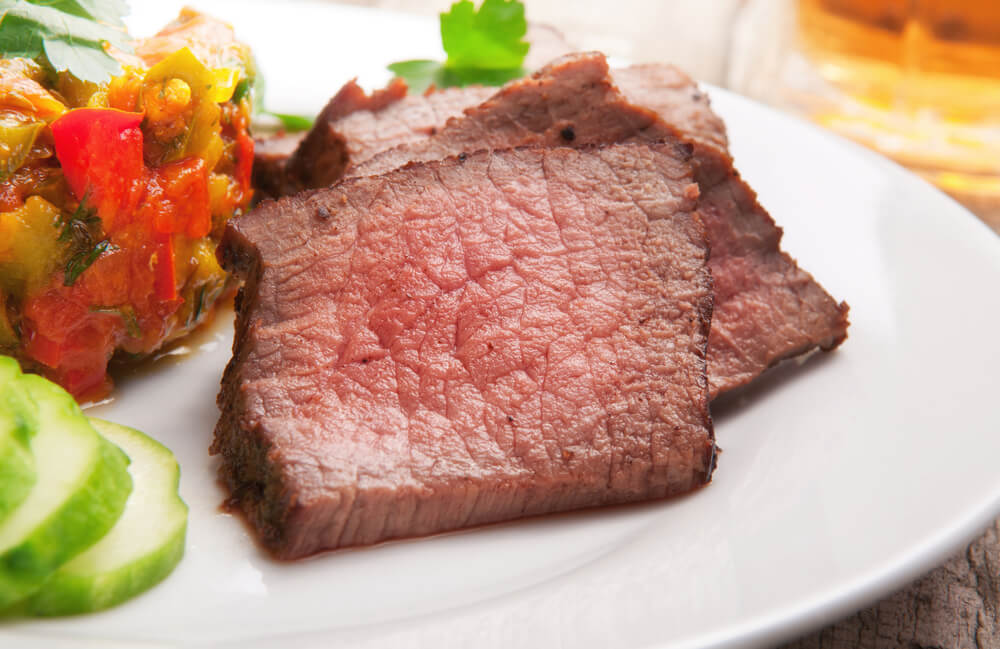
Paleo Protein Is Important
Protein is the key with Paleo. It’s widely accepted that there are many benefits to following a higher protein diet for those that exercise such as increased strength and muscle. It’s also good for fat loss.
Why?
High protein intake has been shown to increase fullness, preserve muscle tissue and increase dietary thermogenesis (calories required to digest food).
Fans of the Paleo diet often report that meat was the biggest source of energy for cavemen! One thing’s for sure, the idea that too much protein is bad for your kidneys just isn’t true. There’s no evidence that a higher protein diet is dangerous for healthy people.
However, if you consume way more protein than you need, the chances are that it will be at the expense of carbs. For someone who exercises, this can be a problem.
Why?
Carbs are your friend – they’re one of your main energy sources. Go too low on carbs and you’ll notice your performance will drop dramatically. Moreover, it can prove to be a very expensive way of eating.
Paleo Protein Powder
The perfect supplement for people on a paleo diet, make sure the paleo protein powder is 100% dairy free and is free of any GMO ingredients. Paleo Protein Powder usually Includes a number of benefits including, peptides, amino acids and vitamins A and D.
Drop The Grains!
Next, you must lose the grains! If you’re on the Paleo diet, then grains are out of the question. Those on the Paleo diet report that grains are full of hard-to-digest gluten and antinutrients and they are dangerous and wreak havoc on digestive systems. But we’re not all gluten intolerant. Statistically, there is a high chance that you aren’t gluten intolerant.
A strict Paleo approach cuts out bread. Most likely eat a little too much bread and it might do you some good to sometimes switch your sandwich for a salad.
Learn how to substitute your carbs out.
In isolation, bread will not make you fat and it doesn’t make sense to completely remove it or other whole grains from your diet. And there are many health benefits to be had from including whole grains in your diet, including improved blood lipids, glucose control and reduced risk of stroke. There have even been studies that show that removing bread from your diet can hinder your fat loss!
It’s true that the pre-historic man likely ate grains if he could find them. In addition to the health benefits of grains, the biggest issue is that unwarranted removal of grains (or any other food) from the diet, can be time-consuming, reduce the enjoyment of food and make eating a balanced diet more inconvenient.
Eat Your Veggies!
Veggies are great, but not legumes! Another big part of most Paleo diet plans is to pile on produce, but drop legumes. The first part of the claim would be considered by most people to be good advice. Eating more seasonal fruit and veggies is very beneficial. Their effects include supplying dietary fiber, vitamins and minerals, sources of phytochemicals that function as antioxidants, phytoestrogens, anti-inflammatory agents and other protective mechanisms.
But, there is no evidence that eating legumes is bad when they are consumed as part of a balanced diet. So the advice to include a wide range of nutritious fruits and veggies is great, but there doesn’t appear to be any strong evidence that you have to drop the legumes.
Say No To Dairy
The next Paleo no-no is dairy. Yogurt, milk and cheese are all out when on the Paleo diet. Large consumption of dairy is discouraged because cavemen didn’t eat it and fans say that lactose intolerance may increase with age, similar to the removal of gluten. But, there are also studies that say dairy is actually good for fat loss! Paleo fans say that small quantities of raw unpasteurized milk may be consumed to avoid fats and important nutrients being stripped away.
When it comes to fat, the Paleo life promotes a fat intake from mainly artery-friendly, monounsaturated fats, polyunsaturated omega-3s like fish oils and avoidance of saturated fats, trans fats and polyunsaturated vegetable oils. That’s great advice, which can be supported by science.
Research shows that omega-3 polyunsaturated fatty acids play an integral role in cell membrane function, brain and eye development and can reduce the risk of heart disease, depression and inflammatory conditions such as rheumatoid arthritis. I’ve often spoken highly about the benefits of coconut oil, and Paleo proponents advocate the use of coconut oil, as well as coconut milk.
When it comes to sugar, only go natural! Paleo followers recommend avoiding processed, refined sugars, and you should avoid packaged foods. This is good advice as packaged junk foods often are very energy dense, low in fiber and not very filling.
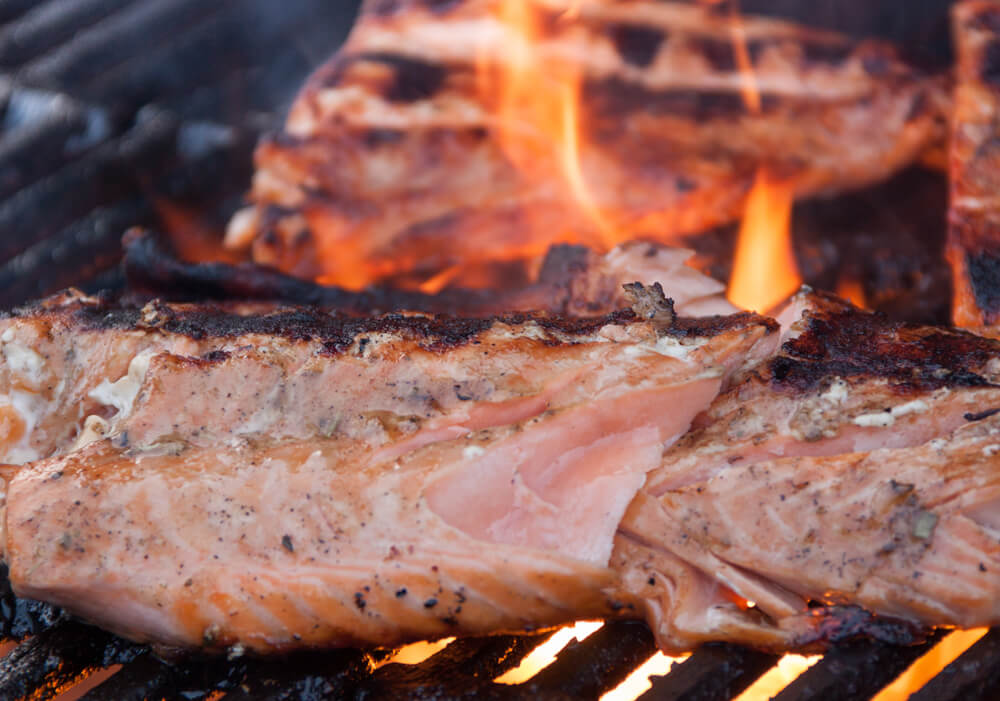
Here’s A Sample Paleo Meal Plan
Day 1
Breakfast– Egg and vegetable muffins
Mid-morning snack– Hard-boiled egg
Lunch– Leftover grilled chicken breast on top of salad greens with vinaigrette
Afternoon snack– Beef jerky
Dinner– Spicy pork chili with pan-fried Brussels sprouts
Day 2
Breakfast– Leftover egg and vegetable muffin
Mid-morning snack– Handful of nuts or trail mix
Lunch– Beef cubes with carrots and mushrooms (add more veggies on the side if you like)
Afternoon snack– Hard-boiled egg
Dinner– Roast chicken with steamed veggies
Day 3
Breakfast– Scrambled eggs with salmon
Mid-morning snack– Banana with almond butter
Lunch– Salad with canned salmon, mustard vinaigrette
Afternoon snack– Handful of nuts or trail mix
Dinner– Garlic cod with green beans
Pre-bed– 80g Greek yogurt with 1 scoop of whey protein
Day 4
Breakfast– Fish and butternut squash hash
Mid-morning snack– Beef jerky
Lunch– Salad with leftover roast chicken, dried cranberries, pecans, apple slices and vinaigrette
Afternoon snack– Banana with almond butter
Dinner– Spicy pork chili with pan-fried Brussels sprouts
Day 5
Breakfast– Onions, mushrooms and spinach fried up with bacon or sausages
Mid-morning snack– Hard-boiled egg
Lunch– Salad with canned salmon, mustard vinaigrette
Afternoon snack– Handful of nuts or trail mix
Dinner– Almond crusted salmon (makes 2 servings; save leftovers for breakfast tomorrow) with roasted beets and sweet potatoes
Day 6
Breakfast– Scrambled eggs with smoked salmon
Mid-morning snack– Hard-boiled egg
Lunch– Portable salad: Grab a can of tuna and an avocado with some salad greens, oil and vinegar and mix it all up
Afternoon snack– Beef jerky
Dinner– Almond crusted tuna (makes 2 servings; save leftovers for breakfast tomorrow) with roasted sweet potatoes
Day 7
Breakfast– Egg and vegetable muffins with smoked salmon
Mid-morning snack– Handful of nuts or trail mix
Lunch– Salad with canned salmon, mustard vinaigrette
Afternoon snack– Hard-boiled egg
Dinner– Spicy pork chili with pan-fried Brussels sprouts
Conclusion
There are both benefits and pitfalls to the Paleo diet. The core idea is a good one.
Why?
It promotes a focus on whole, single-ingredient, high-fiber, nutrient-dense foods that have widespread health benefits. But there are many tenets of the Paleo diet that aren’t supported by science. These ideas can make healthy eating much harder than it needs to be!
Most of the time, I stick to a modified version of the stricter Paleo lifestyle. It has helped with my energy levels and strengthened my immune system. But, rather than going full Paleo, it would be a good idea to pick the best parts of it.
What does that mean?
Focus on eating lots of fresh, wholesome, nutritious foods and limit your intake of heavily refined junk. Don’t go cutting out entire food groups if you don’t need to. Try to eat more like your grandparents instead of a caveman. It’s a more realistic and sensible approach.
Forbidden foods like oats, dairy, grains and legumes and even some junk can be enjoyed. It just comes down to moderation. It’s best to follow a sustainable approach, and one that you can realistically live with for life.
By Keith Cormican, RD
Latest posts by Terry M (see all)
- Garage Gyms - Aug 1, 2018
- Kettlebells – Why They Should Be Added To Your Routine. - Jul 24, 2018
- Weight Belts: What Are They Really For? - May 31, 2018











[…] Paleo diet is made up of mostly grass-fed beef for the premium protein (many of the other meal plans that […]
[…] Best Paleo Diet Macros from Paleo Diet Plan Everything You Need To Know. Source Image: gymjunkies.com. Visit this site for details: gymjunkies.com […]